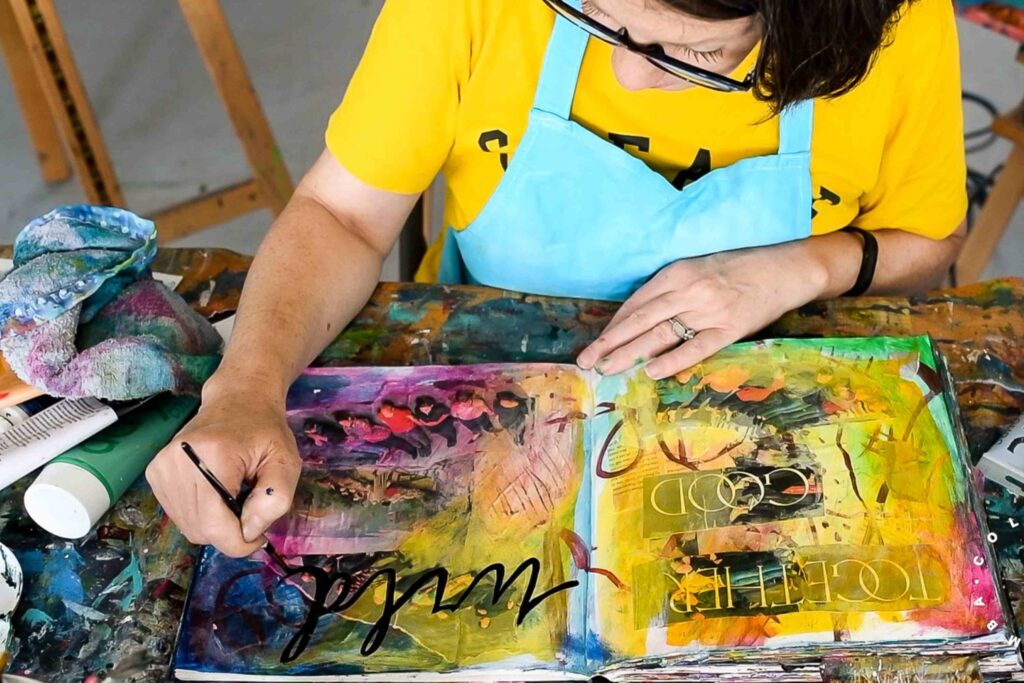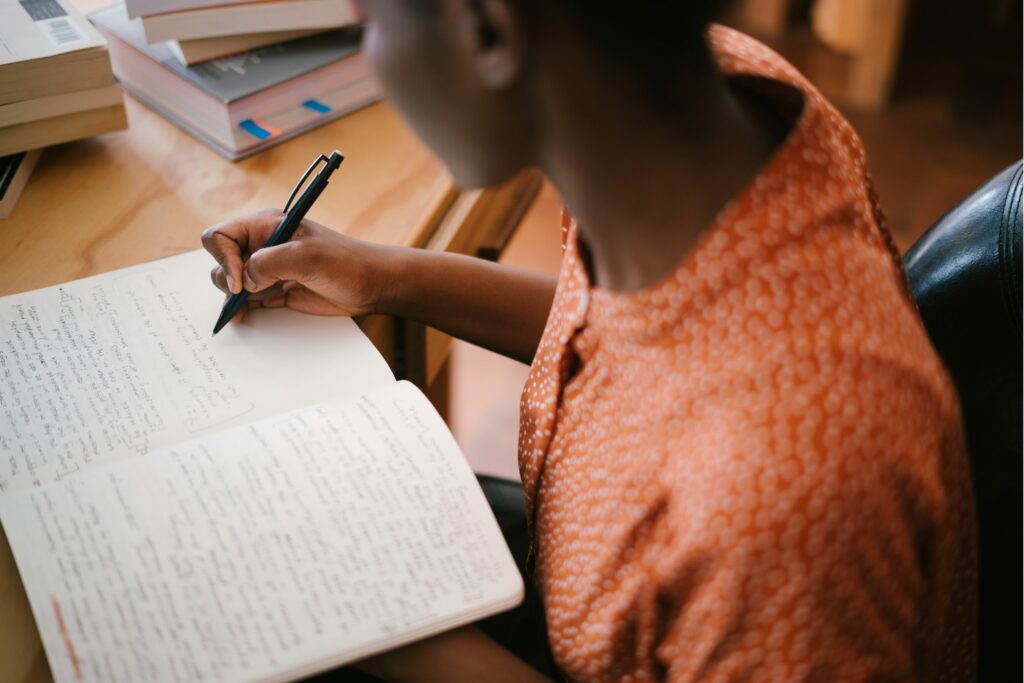“I have nothing to say. I have nothing to say. Slept ok last night. Got to get eggs today. Maybe vanilla essence? Blah, blah this is dull. I wonder if it will rain? Oh god, who cares. I don’t have anything to write here. Three pages is so long.”
Just a short extract from my journal. Reams and reams of inane rubbish, with the odd thread of inspiration, every so often. I’m telling you this to let you know that journalling does not have to be, and is almost never, brilliant or interesting writing. Journalling is a way of dumping all the buzz and bluster of your brain onto the page, to make room for creative thought. And maybe even creative writing. I owe a particularly life-changing brain dump to writer and writing teacher Tim Clare, whose podcast Death of 1000 Cuts includes a free-writing course called Couch to 80k. I highly recommend it to writers who are currently banging their heads against a wall.
Many people’s first encounter with journalling will have been in Julia Cameron’s book The Artist’s Way. It’s essentially a manual for creative recovery, and she calls the practice of morning pages a ‘non-negotiable’ part of the process. Every day you must, as quickly as possible, write three long-hand pages, and not stop until it’s done. It’s one of those morning rituals people swear by; like oil pulling and hot lemon water; that you know you should try but never get round to (more on rituals in next week’s blog). And of course, when I finally got round to trying free-writing, I felt the benefit immediately and cursed myself for not having years of battered notebooks already stacked up in my bedroom like an eccentric hoarder.

Julia Cameron’s morning pages are not the only way; people have taken the idea of ritual free-writing and run with it in every direction; from those who practice somatically, pen in hand, and commit their stirrings to the page between movements; to people like Moyra Scott (find out more about her Wild Art Journalling course here) who uses writing, painting and collage to generate a liberating creative flow.
The idea is not to write a masterpiece, but to simply keep the channel open.
“It is not your business to determine how good it is, nor how valuable it is, nor how it compares with other expressions. It is your business to keep it yours, clearly and directly – to keep the channel open. You do not even have to believe in yourself or your work. You have to keep open and aware directly to the urges that motivate you. Keep the channel open…”
– Martha Graham to AGNES DE MILLE
I spoke to trainee Therapeutic Writing practitioner Ffion Jones, who has set up a YouTube channel dedicated to helping young people, blocked creatives and ‘non-artists’ who want to explore their creativity (basically, everyone). Ffion believes that constant use of technology can kill our creative impulses: We have an idea, and somehow feel that it must be fully realised immediately, so we either give up feeling unworthy; or quickly share something online, without giving it the time and space to develop.
In her YouTube playlist ‘How to Use Your Notebook’ she gives excellent prompts and tips on how to use your personal notebook, with an emphasis on play. “I ask people to resist the temptation to share; to take a photo of it for social media or write it up in an email it to a friend. Your notebook is a place where the seeds of ideas gestate.” So, next time you pass a little stationary shop, maybe go in and invest in a lovely book of blank pages as a gift to yourself and your innate, creative mind.
“There aren’t that many things in this world anymore that are just for you – have your notebook.” Ffion Jones


